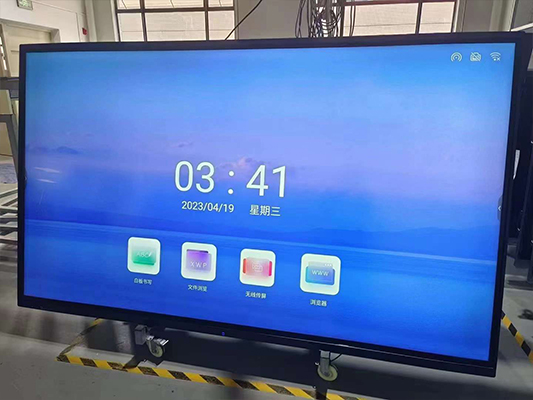Interactive Whiteboards: Transforming Remote Meetings with Screen Sharing
In an era where remote work and virtual meetings have become the norm, interactive whiteboards are emerging as a pivotal tool in enhancing communication and collaboration. These advanced devices are redefining how businesses and educational institutions conduct meetings, making them more interactive and engaging through features such as remote connectivity and screen sharing.
Revolutionizing Remote Meetings
The rise of remote work has necessitated the need for effective virtual communication tools. Interactive whiteboards (IWBs) have stepped up to meet this demand, offering a platform where remote teams can collaborate as seamlessly as if they were in the same room. By connecting to the internet and various digital devices, IWBs facilitate real-time interaction, making remote meetings more productive and efficient.
Screen Sharing Capabilities
One of the standout features of interactive whiteboards is their screen sharing capability. This allows users to share their computer screens directly on the whiteboard, providing a clear and concise way to present information. Whether it’s a complex data chart, a detailed project plan, or an educational video, screen sharing ensures that all participants are on the same page.
During remote meetings, screen sharing on an IWB enables participants to view and interact with the content in real-time. This feature is especially beneficial for brainstorming sessions, collaborative projects, and detailed presentations, where visual aids are crucial for understanding and engagement.
Enhanced Collaboration
Interactive whiteboards go beyond simple screen sharing. They allow multiple users to interact with the board simultaneously, making it possible to annotate documents, highlight key points, and make real-time changes during a presentation. This level of interactivity fosters a more collaborative environment, even in remote settings.
For instance, during a remote team meeting, different team members can take turns controlling the whiteboard, adding their inputs, and modifying shared content. This not only increases participation but also ensures that all voices are heard and considered.
Integration with Digital Tools
Modern IWBs are designed to integrate seamlessly with a variety of digital tools and platforms. They can connect to popular conferencing software such as Zoom, Microsoft Teams, and Google Meet, allowing users to leverage the full potential of these platforms. This integration ensures that the transition between different tools during a meeting is smooth and hassle-free.
Additionally, IWBs support the use of various multimedia formats, enabling users to incorporate videos, images, and other digital content into their presentations. This versatility enhances the overall quality of remote meetings, making them more engaging and informative.
Benefits for Education
In the educational sector, whiteboards are proving to be invaluable, especially for remote learning. Teachers can share their screens to present lessons, display educational videos, and conduct interactive activities. Students, in turn, can engage with the content, ask questions, and participate in discussions, making the remote learning experience more interactive and effective.
Future Prospects
As technology continues to evolve, the capabilities of interactive whiteboards are expected to expand further. Future advancements may include enhanced AI features, better integration with augmented and virtual reality, and more intuitive user interfaces. These developments will continue to improve the effectiveness of remote meetings and educational sessions, making interactive whiteboards an indispensable tool in the digital age.

